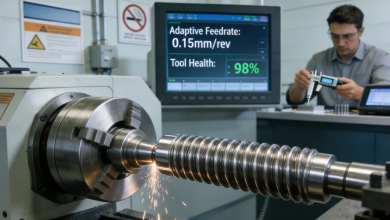Logistics organisations are under unprecedented pressure to improve not only efficiency, but also employee safety. The COVID-19-inspired spike in demand has highlighted endemic performance problems and created new workplace challenges; how can companies recruit and retain staff in a highly competitive market when the transport and storage industry exhibits a higher rate of injury at all levels of severity compared to other sectors?
Digital transformation provides a chance to improve efficiency, reduce costs and enhance responsiveness to customers, and transform the day-to-day experience for employees. This can only be achieved, however, if organisations get the right data collection and analysis solutions in place that quickly and effectively deliver new insight to logistics teams, explains Peter Ruffley, CEO, Zizo, and Ian Brown, CEO, Excelpoint .
Data Capture Challenge
While there are many technologies associated with digital transformation, in essence it is about data; using data to both automate processes and gain better understanding to drive business improvement.
For many organisations, however, that simple statement is the stumbling point. What data is required? Where is it located? How is it accessed? Can it be used in combination with other sources? Is there any contextual information? How often does it change?
The first question, of course, is: how can data be collected? For warehouse operations still reliant upon many manual, even paper-based processes, data collection is complex and time consuming. It can require significant effort to entice any insight from systems – information which is then out of date in this fast moving environment. Inefficiencies remain unchecked and safety risks ignored.
Extracting Value
Achieving fast, effective data capture is a priority. No-code automation software that can be configured into a range of solutions for business-critical processes can quickly improve access to information, eliminating the need for multiple inputs across numerous systems. Such software helps businesses to streamline the way they manage people, systems and information, in turn, improving the workforce’s welfare, achieving flexibility and significant cost savings.
For example, from a safety perspective, simple, automated solutions for logging, recording and resolving incidents can both ensure Reporting of Injuries, Diseases and Dangerous Occurrences Regulations (RIDDOR) compliance and provide vital insight to ensure the incident is not repeated in the future; while automated safety audits create a structured process where information driven insights support employee safety while meeting compliance regulations.
In addition, the deployment of sensors or wearable devices, connecting to an Industrial Internet of Things (IIoT) platform or at the edge, can very quickly deliver new business insights. For example, data from smart controls, such as loading docks, blind intersections and door openings can be used for operational improvements, as well as ensuring employees are safe and following protocols.
Employee Safety
With a holistic overview of operations, logistics managers gain confidence to make better decisions regarding both performance and employee well-being. Workforces can identify areas where incidents could happen, highlighting risks before an accident occurs. In addition, information gathered from wearable devices can pick up an individual’s lifting techniques, body temperatures, heart rate or distance travelled in the workplace – providing managers with the ability to intervene in any unsafe practices in real-time.
This insight also creates a unified picture of what is happening across the factory or warehouse by highlighting patterns of behaviour that previously may have been undetectable, information that can be used within a feedback loop to drive continual improvements. For example, employees can be offered specific interactive and data-driven training – which will not only enhance employee wellbeing, but also improve employee productivity, in turn, increasing their satisfaction.
This is crucial as, according to the Health and Safety Executive, ‘training helps people acquire the skills, knowledge and attitudes to make them competent in the health and safety aspects of their work.’ Such programmes, driven by data-insight, can ensure that individuals performing a task have the competence to do so without putting the health and safety of others or themselves at risk.
Conclusion
Good employees are hard to find right now. For an industry experiencing a significantly higher number of safety incidents – for example forklift accidents account for approximately 85 deaths and 34,900 serious injuries each year – more must be done to both improve the operational risk environment and create tailored employee training and education.
Furthermore, employee safety is a great place to kick off a digital transformation programme. With wearables and no-code solutions, the process is simple and creates zero disruption; and the insight is both immediate and accessible for logistics staff. Critically, it builds confidence in the value of data amongst logistics teams, accelerating their commitment to transformation and helping to create an appetite for data driven change.
Once businesses realise the benefits and can see the impact, such as better employee safety, warehouse managers will begin to question what else they can do. What else can be improved? What else can be changed for the better? And this is the foundation to driving the digital transformation.




